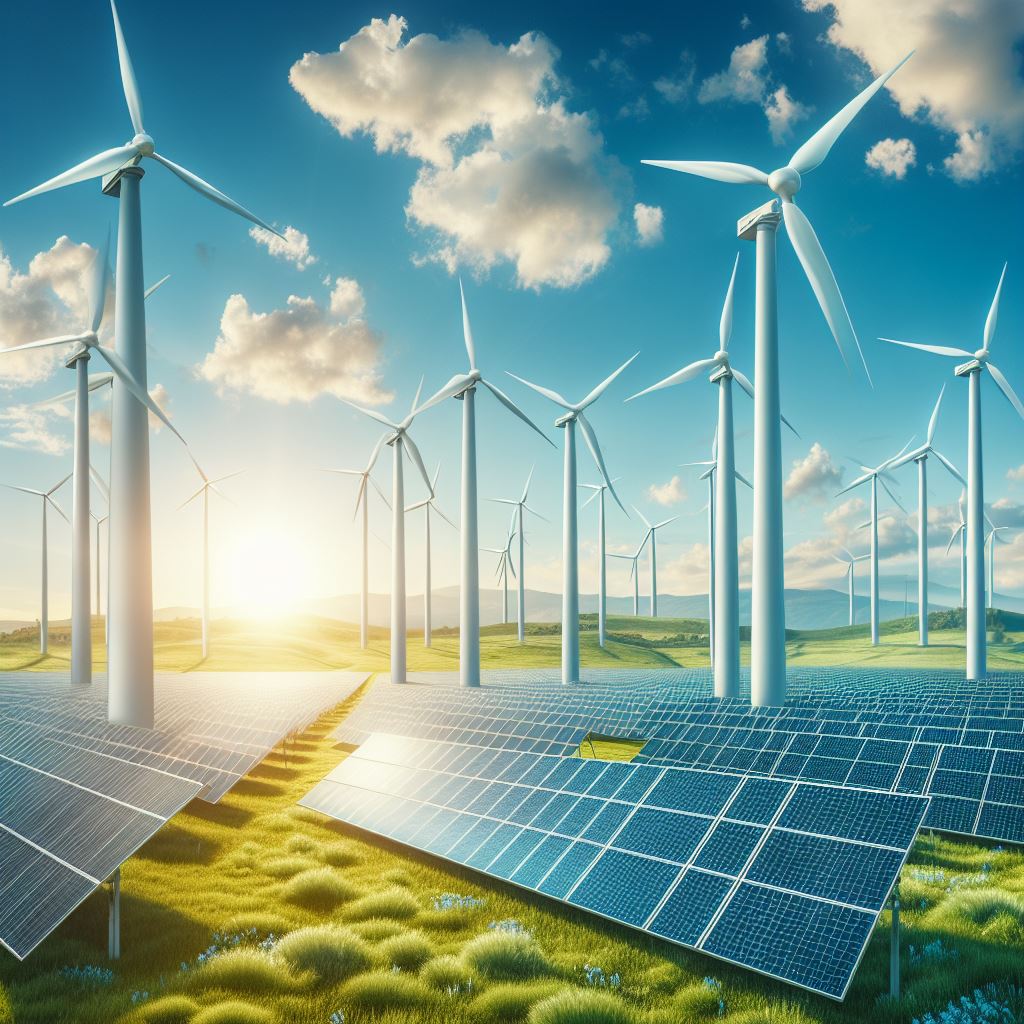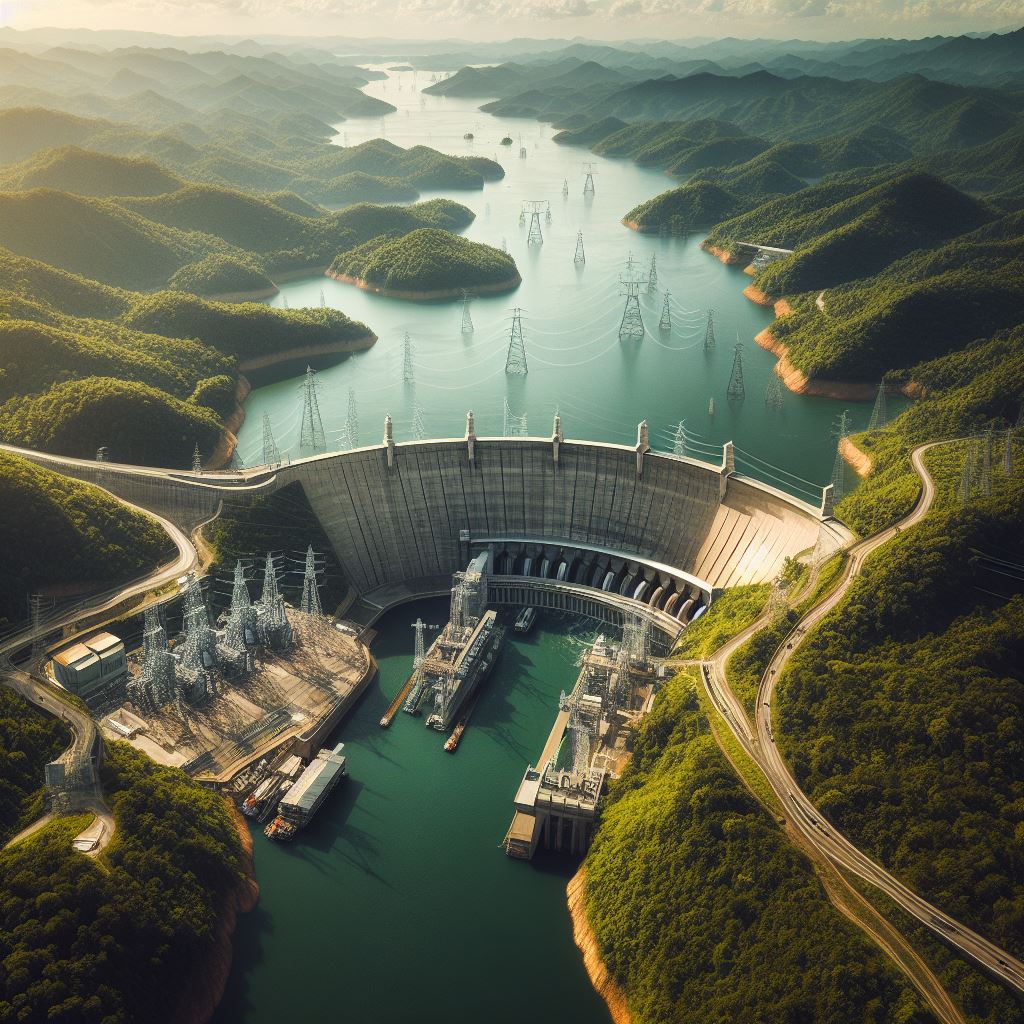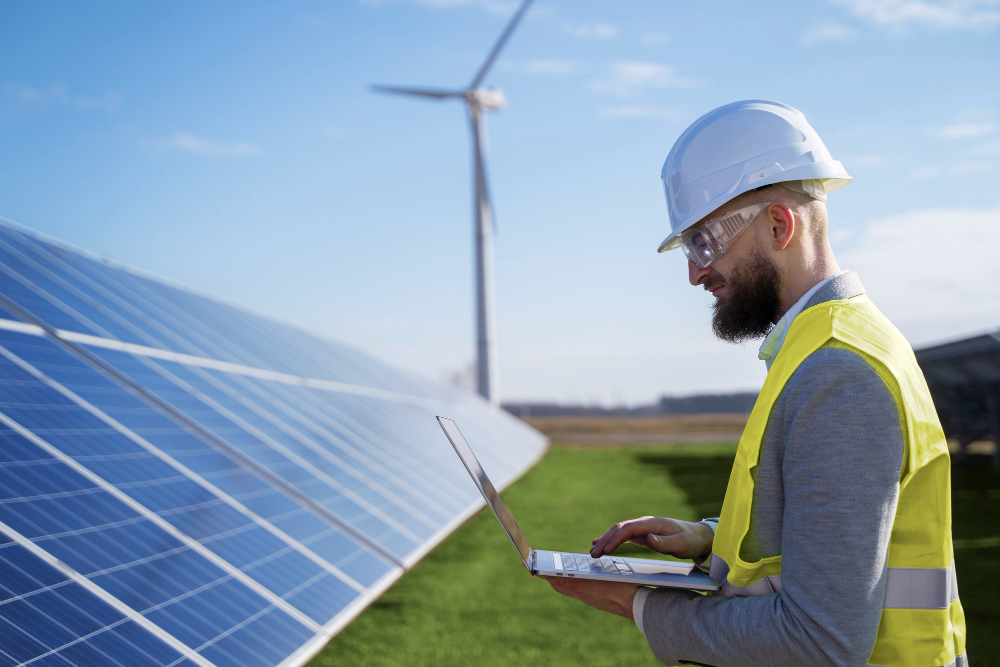Introduction
The world is facing a serious environmental crisis. Climate change, pollution, deforestation, and biodiversity loss are threatening the health and well-being of millions of people and the natural resources that sustain life on Earth. To address these challenges, we need to shift our dependence on fossil fuels, which are the main contributors to greenhouse gas emissions and environmental degradation, to more eco-friendly and renewable energy sources. Green energy, also known as clean energy or sustainable energy, is the energy that comes from natural sources such as sunlight, wind, water, biomass, and geothermal heat. These sources are inexhaustible and can provide power without harming the environment or depleting the planet’s resources. In this blog post, we will explore the benefits and applications of different types of green energy and how they can help us create a more sustainable and prosperous future for ourselves and the generations to come.
Solar Power
Solar power is the energy that is derived from the sun’s rays. It is one of the most abundant and accessible sources of green energy, as the sun shines on every corner of the world and can be harnessed using various technologies. Solar power has many advantages as a clean and renewable energy source. It does not produce any harmful emissions or waste, unlike fossil fuels, and it can reduce the reliance on imported energy and enhance energy security. Solar power can also lower the cost of electricity and create jobs and economic opportunities in the solar industry.
Solar power can be used for various purposes, ranging from small-scale to large-scale applications. One of the most common ways to use solar power is to install solar panels on rooftops or buildings, which can generate electricity for homes, businesses, or communities. Solar panels can also be integrated into the design of buildings, such as windows, walls, or roofs, to improve the energy efficiency and aesthetics of the structures. Another way to use solar power is to build large-scale solar farms, which are arrays of solar panels or mirrors that collect and concentrate the sun’s energy to produce electricity for the grid. Solar farms can be located in remote or rural areas, where the land is not suitable for other uses, and can provide clean and reliable power for many people.
Wind Energy
Wind energy is the energy that is derived from the movement of air. It is one of the oldest and fastest-growing sources of green energy, as wind is a natural phenomenon that occurs everywhere and can be captured using wind turbines.

Wind energy has many benefits as a sustainable alternative to fossil fuels. It does not emit any greenhouse gases or pollutants, unlike coal, oil, or gas, and it can reduce the dependence on foreign energy and increase energy independence. Wind energy can also lower the cost of electricity and create jobs and economic growth in the wind industry.
Wind energy can be used for various applications, depending on the size and location of the wind turbines. One of the most common ways to use wind energy is to build wind farms, which are groups of wind turbines that are connected to the grid and can generate electricity for large areas. Wind farms can be located on land or offshore, where the wind is stronger and more consistent. Another way to use wind energy is to install small wind turbines, which can generate electricity for individual homes, businesses, or farms. Small wind turbines can be mounted on poles, towers, or rooftops, and can provide power for remote or off-grid locations.
Hydropower
Hydropower is the energy that is derived from the force of water. It is one of the most widely used and reliable sources of green energy, as water is a renewable and abundant resource that can be stored and controlled. Hydropower has many advantages as a renewable energy source. It does not produce any carbon dioxide or other emissions, unlike fossil fuels, and it can reduce the reliance on conventional power plants and improve grid stability. Hydropower can also provide multiple benefits for water management, such as irrigation, flood control,
and hydroelectricity generation. Hydropower can also support other renewable energy sources, such as solar and wind, by providing backup power when they are not available.

Hydropower can be used for various purposes, depending on the type and scale of the water source. One of the most common ways to use hydropower is to build dams, which are structures that block the flow of water and create reservoirs. Dams can generate electricity by releasing water through turbines, which spin and produce power. Dams can also regulate the water level and supply for various uses. Another way to use hydropower is to build run-of-river plants, which are small-scale facilities that do not require dams or reservoirs. Run-of-river plants can generate electricity by diverting a portion of the water flow through turbines, which return the water to the river without affecting its natural course.
Hydropower, however, is not without challenges. Dam construction can have negative impacts on the environment and the people who depend on it. Dams can alter the natural flow and quality of water, affecting the aquatic ecosystems and the biodiversity. Dams can also displace communities, disrupt livelihoods, and increase the risk of flooding and landslides. Therefore, it is important to adopt sustainable hydropower practices, such as minimizing the environmental and social impacts, optimizing the efficiency and performance, and enhancing the resilience and adaptability of the hydropower systems.
Biomass Energy
Biomass energy is the energy that is derived from organic materials, such as wood, agricultural residues, animal waste, and municipal solid waste. Biomass energy is a form of stored solar energy, as the organic materials are produced by photosynthesis, the process that converts sunlight into chemical energy. Biomass energy has many benefits as a renewable and versatile energy source. It can provide heat, electricity, and fuel for various uses. It can also reduce the amount of waste and greenhouse gas emissions, as biomass can be used as a substitute for fossil fuels or as a feedstock for producing biofuels, such as ethanol and biodiesel. Biomass energy can also create jobs and economic opportunities in the biomass industry, especially in rural areas where biomass resources are abundant.
Biomass energy can be used for various purposes, depending on the type and quality of the biomass source. One of the most common ways to use biomass energy is to burn it directly, which can produce heat for cooking, heating, or industrial processes. Another way to use biomass energy is to convert it into biogas, which is a mixture of methane and carbon dioxide that can be produced by anaerobic digestion, the process that breaks down organic matter in the absence of oxygen. Biogas can be used as a fuel for heating, electricity generation, or transportation. A third way to use biomass energy is to convert it into biofuels, which are liquid or gaseous fuels that can be produced by various processes, such as fermentation, transesterification, or gasification. Biofuels can be used as a fuel for vehicles, aircraft, or power plants.
Biomass energy, however, is not without challenges. Biomass production and utilization can have environmental and social impacts, such as land use change, deforestation, soil erosion, water pollution, and food security. Therefore, it is important to adopt sustainable biomass practices, such as ensuring the availability and diversity of biomass resources, optimizing the efficiency and quality of biomass conversion, and minimizing the emissions and waste from biomass combustion.
Geothermal Energy
Geothermal energy is the energy that is derived from the heat of the earth. It is one of the most stable and continuous sources of green energy, as the earth’s temperature remains constant and does not depend on the weather or the time of day. Geothermal energy has many benefits as a reliable and renewable energy source. It does not produce any greenhouse gases or pollutants, unlike fossil fuels, and it can provide baseload power, which means it can operate 24/7 without interruption. Geothermal energy can also lower the cost of heating and cooling and create jobs and economic development in the geothermal industry.
Geothermal energy can be used for various purposes, depending on the temperature and depth of the geothermal resource. One of the most common ways to use geothermal energy is to build geothermal power plants, which are facilities that use the heat from the earth to generate electricity. Geothermal power plants can be classified into three types: dry steam, flash steam, and binary cycle. Dry steam plants use steam from underground reservoirs to spin turbines and produce power. Flash steam plants use hot water from underground reservoirs to create steam and power turbines. Binary cycle plants use a secondary fluid with a lower boiling point than water to transfer the heat from the geothermal resource and power turbines. Another way to use geothermal energy is to use geothermal heat pumps, which are devices that use the earth’s temperature to provide heating and cooling for buildings. Geothermal heat pumps can be installed in shallow wells or pipes that circulate a fluid that absorbs or releases heat from the ground.
Geothermal energy, however, is not without challenges. Geothermal exploration and development can have environmental and technical risks, such as land subsidence, earthquakes, noise, and corrosion. Geothermal resources can also vary in availability and quality, depending on the location and geology of the area. Therefore, it is important to adopt sustainable geothermal practices, such as conducting careful site selection and assessment, implementing best practices and standards, and monitoring and mitigating the impacts of geothermal operations.
Conclusion
Green energy is the future of our planet. It is the energy that comes from natural and renewable sources, such as solar, wind, water, biomass, and geothermal. Green energy can provide clean and sustainable power for various uses, without harming the environment or depleting the planet’s resources. Green energy can also help us combat climate change and environmental degradation, which are the biggest threats to our survival and well-being. Green energy can also create economic and social benefits, such as lower energy costs, job creation, and improved quality of life.
We all have a role to play in the transition to green energy. Individuals, businesses, and governments can take action to embrace green energy solutions in their daily lives and activities. We can install solar panels or wind turbines, use biomass or biofuels, or switch to geothermal heating and cooling. We can also conserve energy, use energy-efficient appliances, and support green energy policies and initiatives. By doing so, we can make a difference for ourselves and the generations to come. We can make our planet a better place to live. We can make our planet green.
